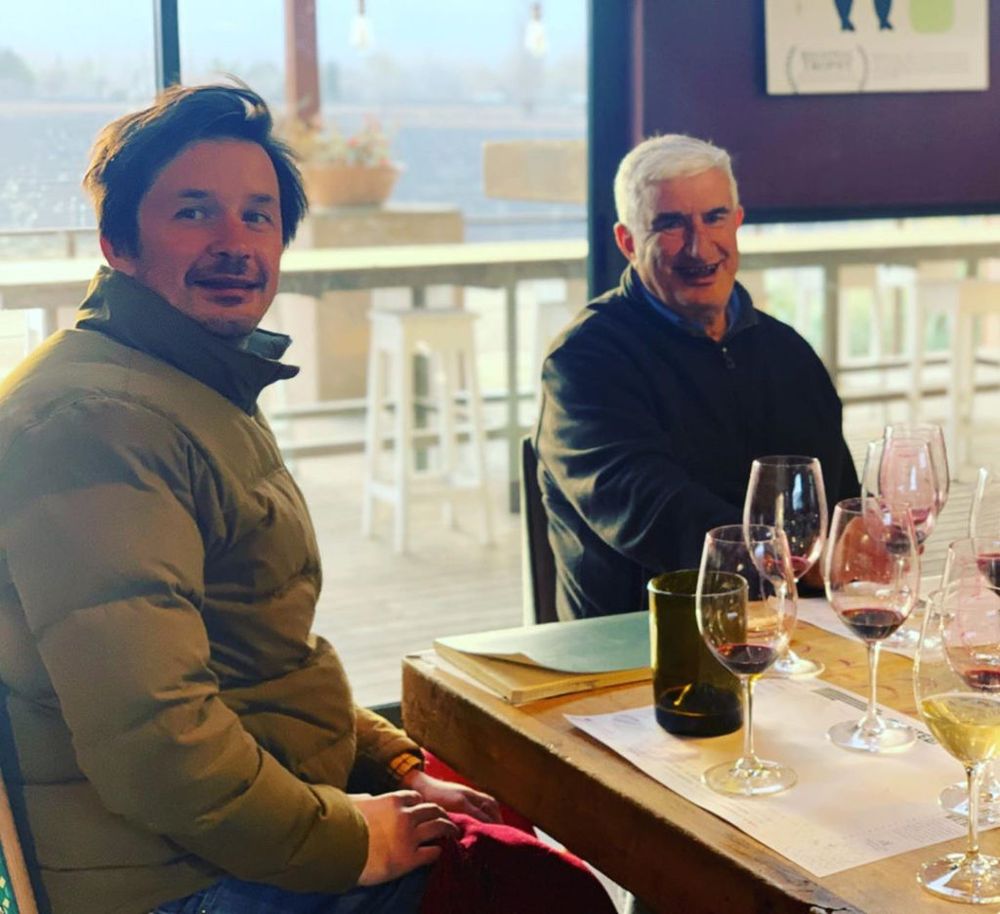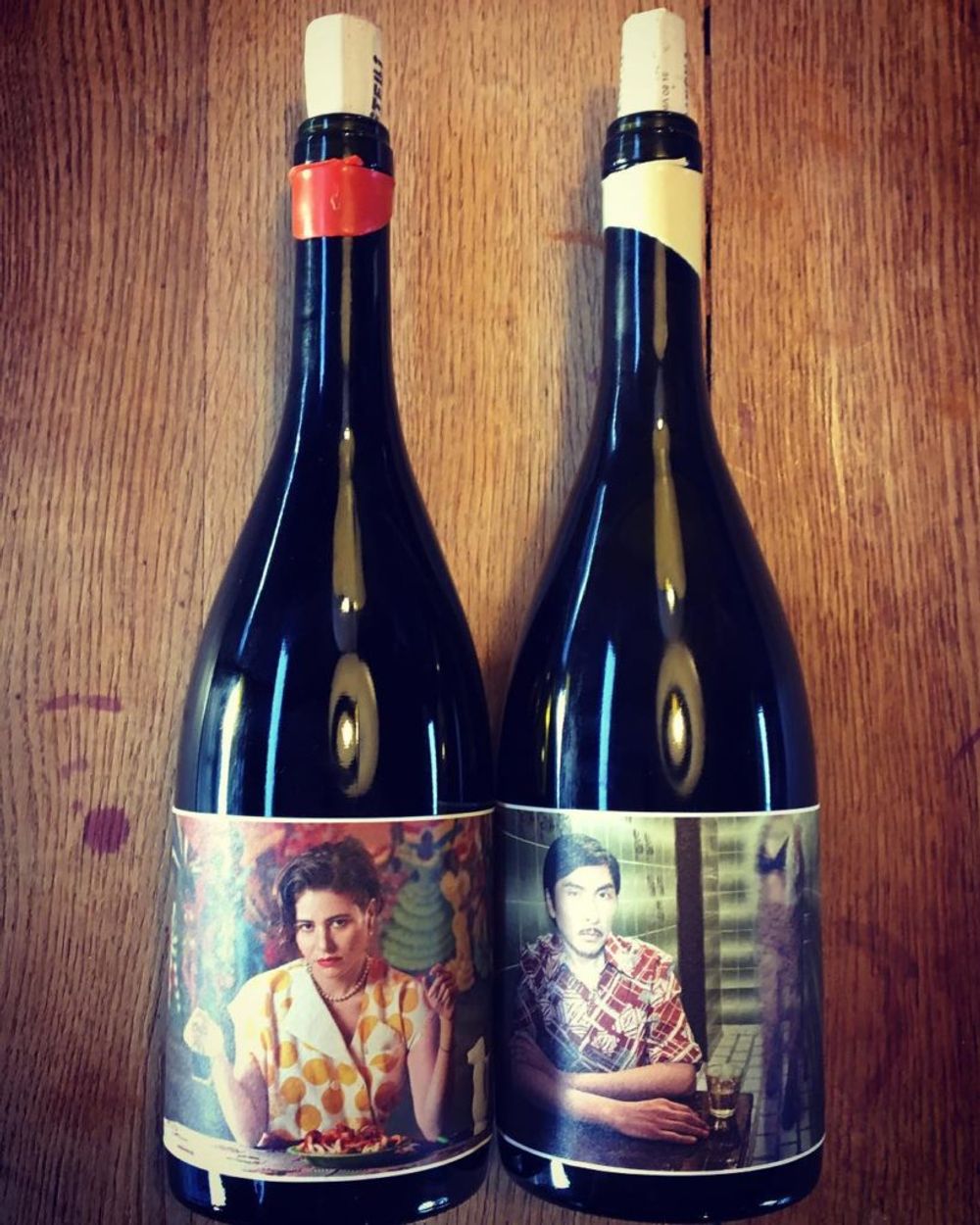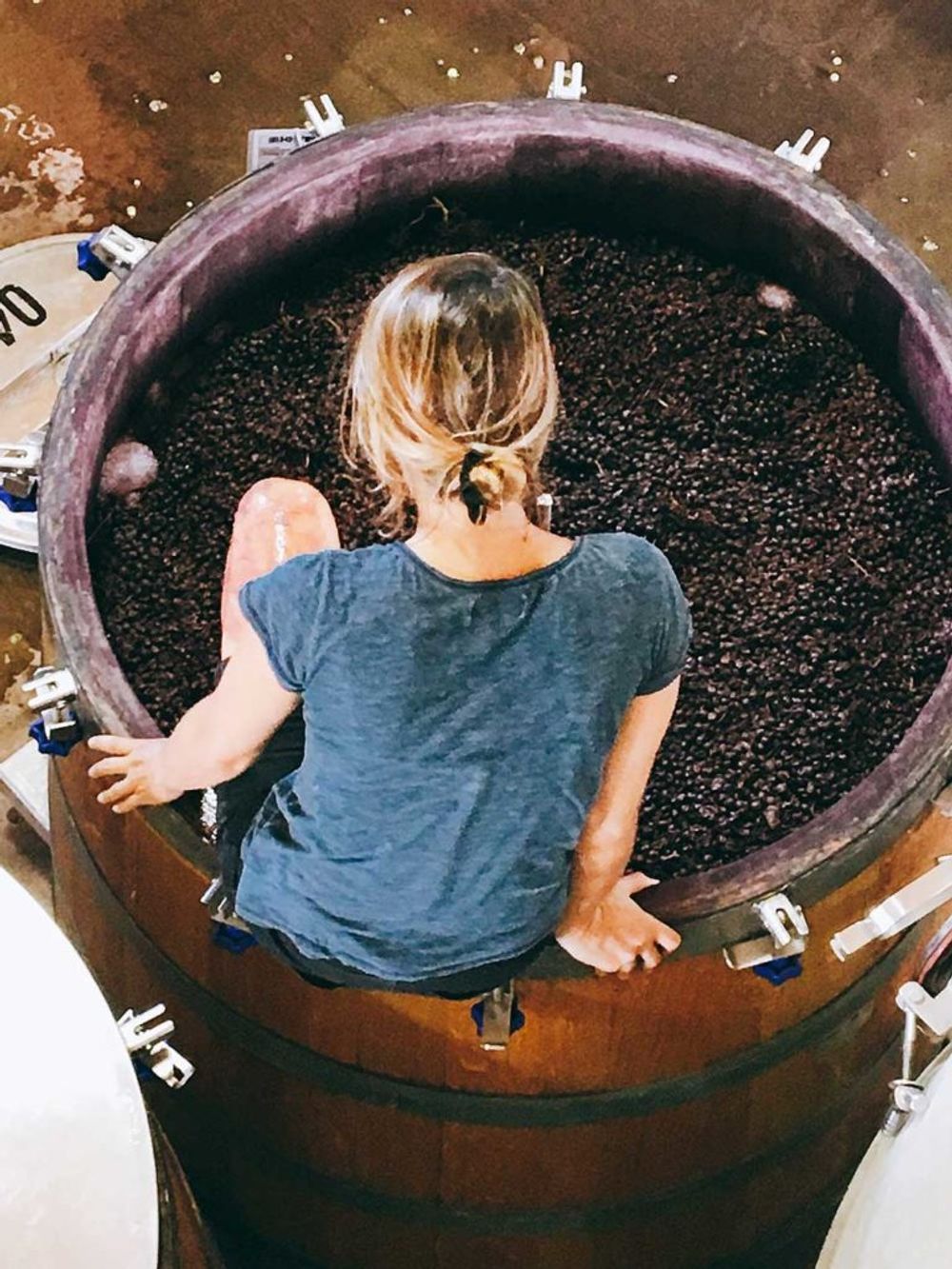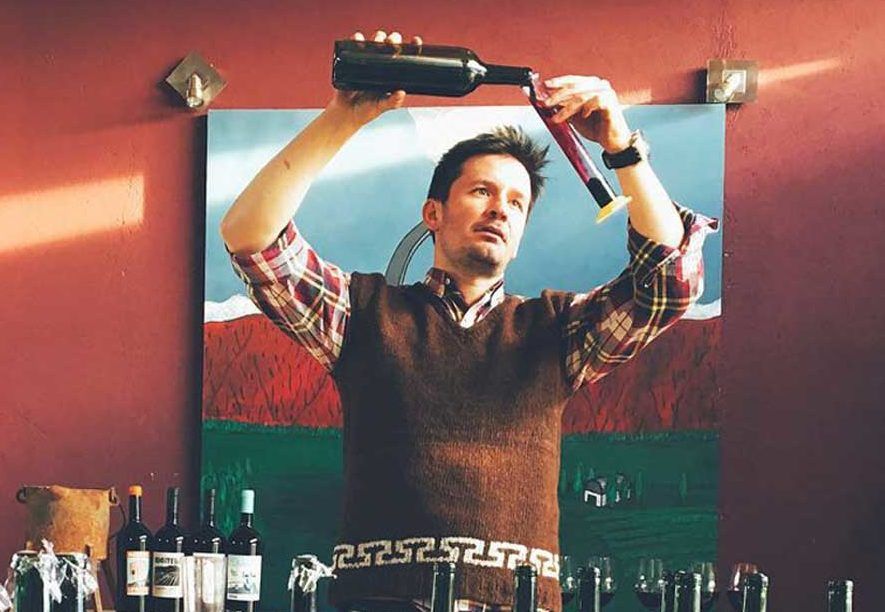“He also makes – of all things – a Trousseau from grapes gathered from ancient wild vines in Patagonia: Argentinian Bastardo is surely as different as different gets,” writes Keay
I think I was half way around Hallgarten and Novum’s vast 700-wine tasting at the converted church at Marylebone Road when I realised I really wanted something different. The HN range is a pretty good place to taste unusual varieties from places like the Caucasus and eastern Med – with Armenia and Georgia joining Greece, Turkey and Lebanon in this year’s line-up – but being quite familiar with these regions, I wanted something off my normal radar.
“Have you tried the Riccitelli wines? I’m not going to say anything but you really should try them, particularly the ones from Patagonia,” said HN sales manager Christo Lockhart, pointing me upstairs where an enthusiastic Matias Riccitelli was pouring his wines.

Father and son: Matias with his father Jorge Riccitelli
Son of the renowned winemaker Jorge Riccitelli who turned Bodegas Norton into one of the stalwarts of Argentina’s wine world, Matias’s wines are far removed from his Dad’s. He makes as many as 25 wines at his main Mendoza winery and a few more at his more recent project some 1000 miles to the south, in Patagonia. Malbec is a big part of the range, particularly in Mendoza – and Matias is probably best known for his inexpensive, crowd-pleasing Hey Malbec.
Yet the most interesting thing about Matias Riccitelli is his commitment to what are, for Argentina, less mainstream varieties made in far from obvious ways, with the underlying philosophy being authenticity and expressing Argentina’s diversity.

All the grapes for Blanco de la Casa are left to ferment for eight months in a concrete egg
He says too many people are keen to associate Argentina with Malbec and Torrontes, suggesting “it is an amazing country to make wine from all sorts of varieties, Malbec right through to Pinot Noir, if you know the right places.” He also makes – of all things – a Trousseau from grapes gathered from ancient wild vines in Patagonia: Argentinian Bastardo is surely as different as different gets.
At a Zoom tasting organised by HN Wines to showcase three of his wines, Blanco de la Casa and Tinto de la Casa from Mendoza and his truly outstanding Semillon 2019 from Patagonia, I got a further insight into his wines and winemaking philosophy.

The Blanco de la Casa 2017 – his idea of a house white, though with just 3000 bottles produced, the name doesn’t quite do it justice – was a good place to start. This is a deceptively simple wine, quite unadorned, with grapes taken from three very different sites with very different soil types, in Mendoza’s Uco Valley. The 40% Sauvignon Blanc is from Gualtallary, very high at 1400m metres, ensuring good acidity; the 40% Semillon is from very low yielding 50 year old vines planted in sandy soil at 1000 metres at La Consulta whilst the remaining 20% Chardonnay hails from low yielding soil and gravel soils at La Carrera at 1700 metres. All the grapes are left to ferment for eight months in a concrete egg before then spending three months in bottle prior to release. The result is an amazingly balanced, slightly saline wine, just 12.5%, with Riccitelli saying it reflects his belief you “can take different things from different places to make a highly expressive wine.”
The Tinto de la Casa 2018, made in similar volumes, is a riff on the same theme but is 100% Malbec taken from two very different high altitude sites, at Las Campuertas and Gualtarray, at 1100 and 1400 metres respectively, blended and given extra acidity by spending time in aged oak vats. For me the resulting 14% wine is astonishingly bright and wonderfully balanced, with huge depth, banishing notions of Malbec being a heavy, oaky wine. This is a wine that really allows the variety to express itself, fairly unadorned.
“I love the intensity and the rich natural acidity; this is very typical of the kinds of wine I like,” he says.
Onto the Semillon 2019 (or as Argentinians pronounce it, Semi-jon) one of the wines Riccitelli makes at his Patagonia project, which he said reflected his desire to preserve and build upon Argentina’s old wine-making heritage.
“I went to Patagonia and in particular the Rio Negro because I really wanted to work with these old vines, which, because they are so low yielding, deliver wines of great intensity,” he says, pointing out that the grapes for his Semillon come from 50 year old ungrafted vines. Many of these amazing old vines were actually pulled up when winemakers in the 1970s-1990s turned their back on Semillon because it was unfashionable. Riccitelli says there are now less than 40 hectares in Rio Negro, of which he uses the grapes taken from just five, ageing the wine in foudres for eight months before bottling unfiltered.
“Everything is natural – there are no pesticides, nothing is added,” he says of these wines, bottled in what look like hefty broad-shouldered takes on a 1970s Vermouth bottle. He also makes a Merlot, Trousseau and Torrontes – many miles from its usual home in northern Argentina – in this range, similarly from old vines.

So what lies behind Riccitelli’s winemaking philosophy?
Asked what kinds of wines – other than his own – he most appreciates, he says the Spanish new wave is very interesting.
“I love what the younger winemakers there are doing; it is very encouraging and impressive to see the wines that are coming out right now,” he says.
What does he believe the future holds for Argentina?
His biggest wish, it would seem, is that it doesn’t continue to be defined by Malbec.
“Cabernet Franc in particular has great potential but I’m also working well with Pinot Gris, Chardonnay of course, and Pinot Noir. We have a huge domestic market which means we can experiment with different wines and people are always keen to try new things. And although I love Malbec, I really think it is time for the world to see a different face of Argentina. We can do lots of things really well and it’s time we showed this off,” he says.
Riccitelli wines are imported into the UK by Hallgarten & Novum Wines.









































